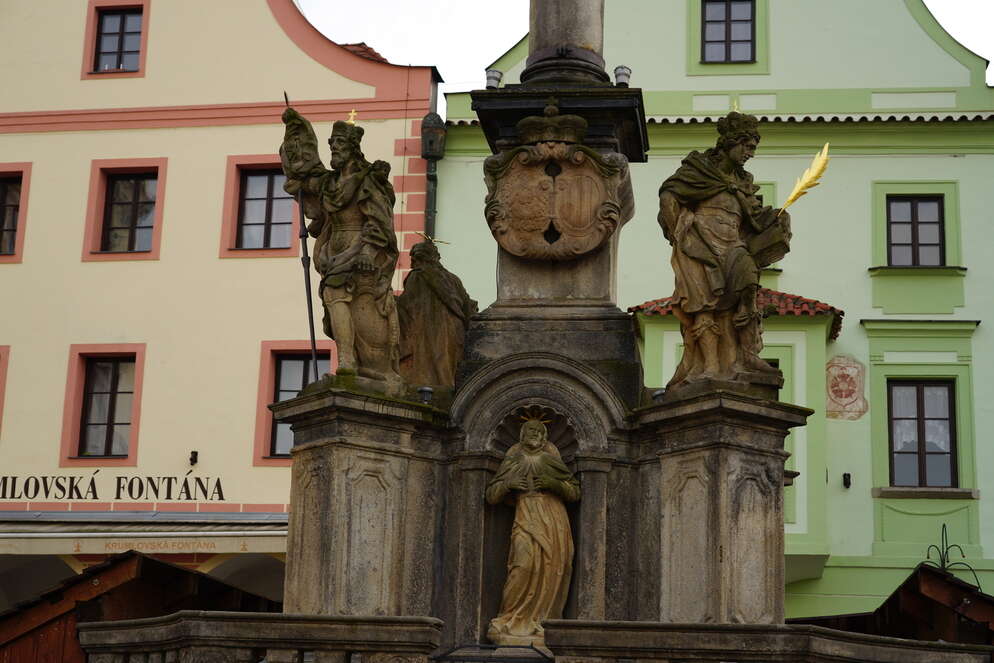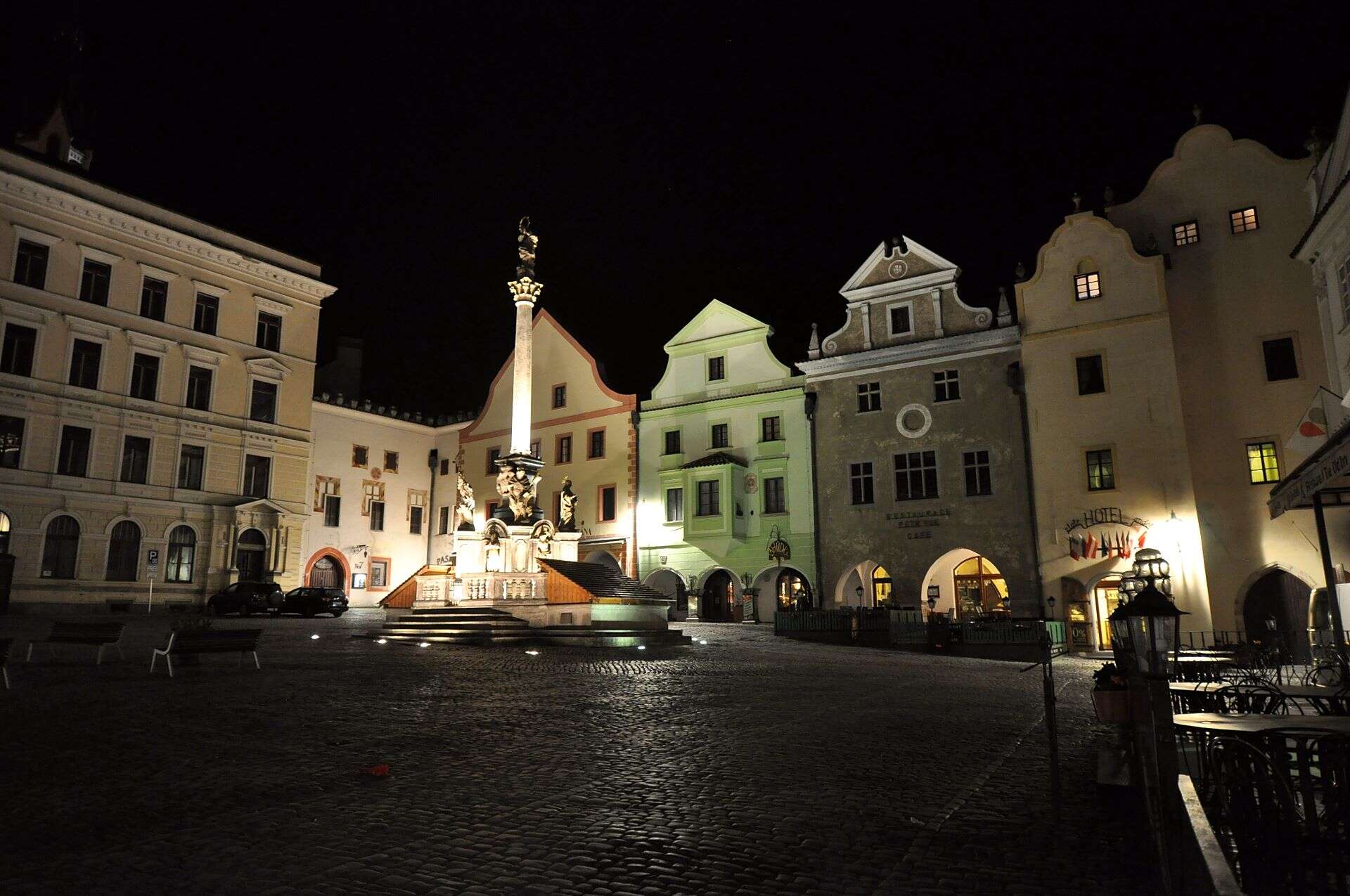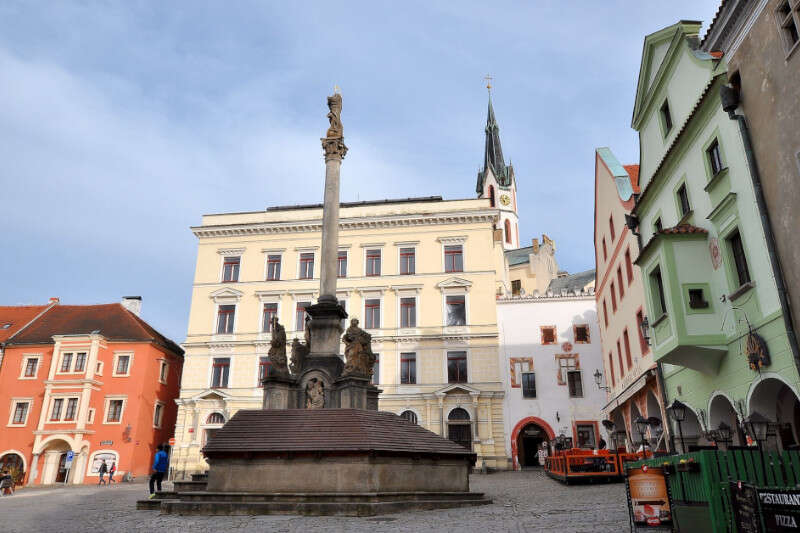Svornosti square
For more than 150 years, the building's foundation was mistakenly associated with a document from 1309, which also dates the construction of the Golden Crown Monastery, and Krumlov was probably first named a town. In this context, the building was called the Golden Crown House and referred to as the property of the local clergy.
Dominant features of the square
Buildings
The primary building among the houses is the town hall. Its striking broad facade was built at the beginning of the 17th century when two gothic houses were joined. It also includes a bell which used to summon councillors to meetings. Its façade is of great interest, as it is painted with the emblems of the Eggenbergs, the Czech lands, the Schwarzenbergs and the town of Český Krumlov.
Another interesting building is the Zlatý anděl inn. It is second a two-storey building with a profiled entrance with a broken Gothic portal from 1880. The whole building is in the Gothic style and was created by combining two buidings. Later this house was rebuilt into Renaissance style.
You also shouldn’t miss the building that houses the Hotel Měšt'ák or Old Inn, which includes the original cellars from the 13th century.
Statues
In the courtyard of Svornosti Square there is a monumental statue of the Virgin Mary with Christ in her arms. This place is known as the "Rynošská Bastion", which has become a meeting place for locals and visitors.
The real landmark of this square is the plague Marian column from 1716 with a statue of the Immaculate Virgin Mary - that is Immaculata - and eight saints, the patron saints of the town and protectors against the plague, placed in two lines. In the upper line there are statues of St. Wenceslas, St. Vitus, St. John the Evangelist, St. Judas Thaddeus and in the lower row St. Francis Xavier, St. Sebastian, St. Cajetan and St. Roch.
The square is particularly characterised by its long romantic streets and the walk under the arcade. The Renaissance Maashouses (a large room ont he ground floor of gothic or renessaince houses) are also worth a look.











